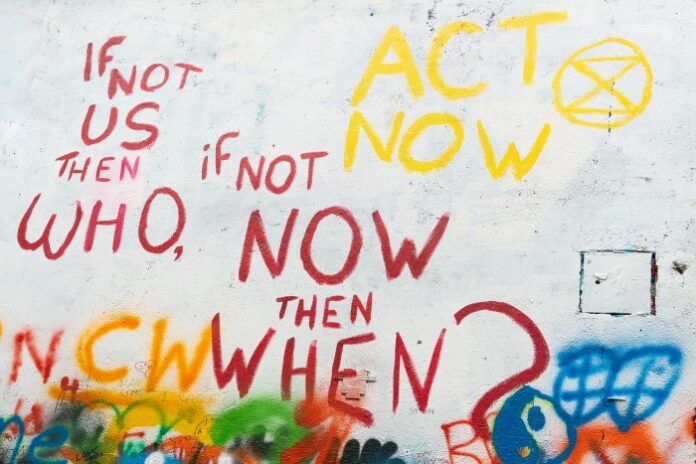Emma Laviolette
UJW-DC Spring 2022
It’s not uncommon to see the word “luxury” when shopping for a basic sustainable t-shirt, which might cost you $20 to $50.
At the beginning of the modern environmental and conservation movement in the 1960s, advocates were mainly from middle-class backgrounds, or lobbying groups and scientific organizations. While the presence of scientific organizations hasn’t changed much, the lack of economic and racial diversity has created exclusivity that some find discouraging in a movement that rarely shows the individual or organized contributions of Black community members.
Anna Uehlein, a 17-year-old climate activist who’s part of a chapter of Fridays For Future, a youth-led climate activism organization, says the makeup of the environmental activism groups they work with, is predominantly white women.
“And that has existed for a long time. Even in the environmentalism movement of the 70s and 80s, it was very much people who already had a lot of power in society …,” says Uehlein, who’s been involved in climate action since elementary school. “It’s pretty much stayed like that up until recently, where diversity has become more prominent than it used to be …”
“I think when you don’t see yourself represented in a particular group, you feel a lot less inclined to join it,” says Uehlein. “And that’s true for anything.”
Sofia Woldeab, a 15-year-old climate activist at Montgomery Blair high school, has been involved in climate action since middle school. Woldeab says elitism within the environmentalism movement worsens anxiety related to climate change because it makes people feel like they cannot make a significant impact.
I see many ignored Black climate change activists advocating for their own communities
Sofia Woldeab
“White climate change activists are oftentimes more renowned and accredited for their activism, whereas I see many ignored Black climate change activists advocating for their own communities.”
The effects of climate change are already in play in many communities most vulnerable to its impact.
According to Blue Water Baltimore, a climate change advocacy group, by the year 2080, Baltimore, Maryland, is expected to have a climate comparable to Cleveland, Mississippi. In January, Cleveland had an average high of 51 degrees. In comparison, Baltimore has an average high of 43 degrees in winter. Blue Water Baltimore projected that the Broadway East neighborhood alone would have a stark temperature difference compared to the more affluent Roland Park neighborhood.
“If you are an individual who has a good economic status, has a secure job, and doesn’t have health concerns, you might not be as vulnerable as someone whose income might depend on whether there are crops to harvest,” says Matt Fitzpatrick, an ecologist and professor at the University of Maryland Center for Environmental Science.
“Lower-income communities are a vulnerable group. So, for a given amount of exposure, they are more likely to feel adverse effects. And they’re also potentially more likely to be more exposed because we know that these are often some of the places that experience the largest heat island effects.”
The United States Environmental Protection Agency defines heat islands as “urbanized areas that experience higher temperatures than outlying areas.” Heat islands have severe impacts, such as increased heat-related deaths and illnesses.
“We think about it [climate change] in terms of direct effects. You could have heat waves or flooding or other extreme events that impact people’s health or could destroy their homes …” says Fitzpatricks. “But, there are all sorts of indirect effects too … we could feel those effects through increased food prices …”
The evidence alone is enough cause for people in all communities to contribute to environmental protection and climate change mitigation. Still, lack of inclusion and economic accessibility remains a barrier.



